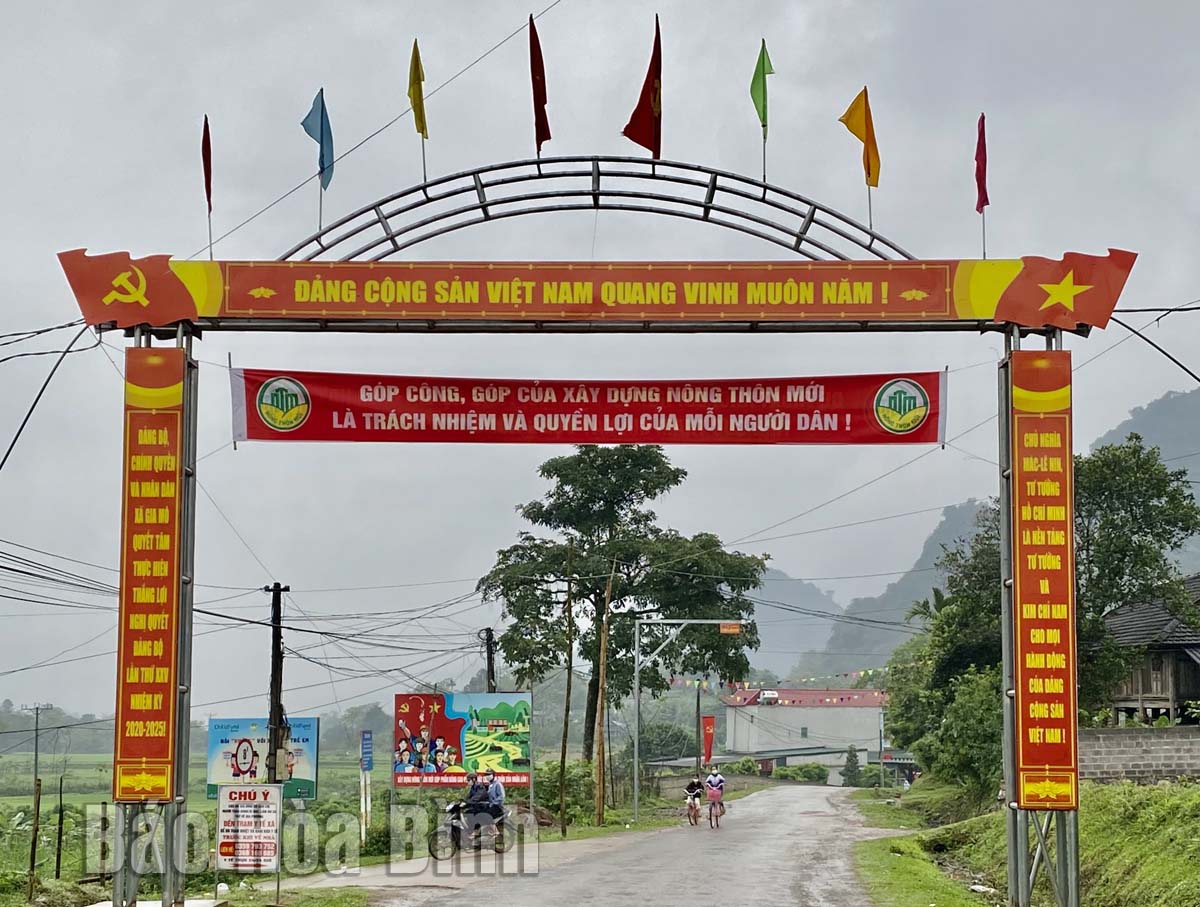
(HBO) – From a disadvantaged commune, Gia Mo (Tan Lac district) has been honoured with new-style rural status earlier this year, thanks to concerted efforts made by local Party organisation, administration and people.
A main road of Gia Mo commune concreted to facilitate people’s travel.
Its rural transport system has been considerably improved, with all communal roads and those connecting its centre to district roads concreted. All villages now have a cultural house and a playfield for sport events. Last year, villagers donated money and services, worth nearly 26 million VND, and contributed 23,350 sqm of land for the construction of public projects.
Secretary of the Party Cell of Ren hamlet Bui Van Uc said the commune’s policies for building cultural houses, new roads and alleys have received strong support from villagers who have donated services and land for these projects.
In addition to infrastructure development, local living standards have been raised, he said, adding that the village’s average income per capita has reached 37 million VND per year. Last year, the number of poor households in the village declined by half.
People across the commune have focused on boosting economic growth, with the expansion of many successful models in husbandry, horticulture, plantation and trade which generate revenue ranging from 200 – 300 million VND annually. All households in the commune have access to clean water supply.
Chairman of the communal People’s Committee Bui Van Vuong said in 2021, the commune has all five villages and 672 households, or 83,8% of total, awarded with cultural status.
The commune is home to some 3,600 people from three ethnic groups, 95.2% of whom come from the Muong ethnic minority group.
Most of its residents live off agriculture. In recent years, people have promoted innovative thinking in business development and accelerated agricultural restructuring as an effort to raise the value of their goods and earnings.
The commune’s 2021 average income per capita doubled that of 2015 to hit 36.6 million VND per year.
Poverty rate dropped to 10.1%./.
The Department of Education and Training of Hoa Binh province held a conference on March 18 to review the performance of the "Safe and Happy School" Project and set out tasks for 2025. The project, funded by the Taiwan Fund for Children and Families (TFCF), aims to create a safe, inclusive, and supportive learning environment for students. The event saw the attendance of representatives from the TFCF and 26 beneficiary schools.
With over 70% of their workers being women, trade unions across industrial parks (IPs) in Hoa Binh have been actively safeguarding their legal rights and interests while implementing initiatives to improve their income and well-being.
In recent years, the Hoa Binh provincial General Hospital has continuously innovated itself and improved the quality of medical services to meet the increasing needs of local people. With substantial investments in infrastructure and modern equipment, along with a team of highly qualified doctors and nurses, the hospital has gradually established itself as one of the leading medical units in the Northwestern region and a trusted destination for healthcare for people inside and outside the province.
From mastering the fundamentals of programming to achieving national recognition, the Programming Club of the Le Van Tam Primary School (STAR LVT28) in Hoa Binh city has made remarkable strides in the field of robotics.
The Ho Chi Minh Communist Youth Union Committee and the Vietnam Youth Federation chapter of Hoa Binh province organised a programme on March 12 to launch the "Digital Literacy" movement and an online quiz on the resolutions of the Vietnam Youth Federation congresses at all levels, as well as the Politburo's Resolution No. 57-NQ/TW on breakthroughs in the development of science, technology, innovation, and national digital transformation.
As climate change grows more unpredictable, the development of production forests has become essential - not just for economic growth, but for safeguarding the environment and maintaining ecosystem balance. By boosting local incomes, curbing natural disasters, preventing soil erosion, and protecting water resources, these forests play a crucial role in sustainable development.



